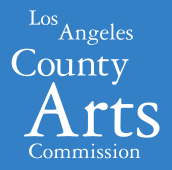Lucrecia Martel
Loading...
Biography
Lucrecia Martel (born 1966) is an Argentine film director, screenwriter and producer often associated with the New Argentine Cinema movement alongside directors Pablo Trapero, Martín Rejtman and Lisandro Alonso. She was born in Salta in northern Argentina and settled in Buenos Aires. In 1988 she enrolled at the Escuela Nacional de Experimentación y Realización Cinematográfica (ENERC), but her education was cut short due to lack of funds. Largely self-taught, Martel began her career directing short films between 1988 and 1995, one of which, Rey muerto (Dead King, 1995), won a series of awards on the international film festival circuit. Martel is best known for her three features, La ciénaga (The Swamp, 2001), La niña santa (The Holy Girl, 2004) and La mujer sin cabeza (The Headless Woman, 2008), all of which were filmed in the region around Salta. This trilogy of films exemplify Martel’s unique cinematic voice and her remarkable approach to narrative storytelling, sense of place, subjective encounters and the universality of human experience. In 2006 Martel was a member of the Cannes Film Festival Feature Films Jury. She has won awards for her films at many major festivals, including the 1999 Sundance Film Festival, the 2001 Berlin International Film Festival and the 2008 Rio de Janeiro International Film Festival.
Interview
Summary
Lucrecia Martel is interviewed by Lourdes Portillo at the Linwood Dunn Theater in Hollywood, California, on October 5, 2014. It is a co-production with the Getty Foundation’s Pacific Standard Time: LA/LA initiative and is part of the project From Latin America to Hollywood: Latino Film Culture in Los Angeles 1967-2017.
Martel begins by discussing her upbringing in Salta, Argentina. She talks about growing up with six siblings and how the complexity of a family’s dynamic has always fascinated her. She shares how embarking on a career in cinema was unconventional for a woman in Argentina in the 1980s and that she had never considered it as a path she would necessarily pursue. Martel reveals the working process behind her film work, philosophizing on the mechanisms of cinema, the role of the spectator and the way in which film directors can use the audiovisual narrative to break common perceptions of reality. She shares her inspirations and passions and talks about Pedro Almodóvar and Patrice Chéreau as directors with whom she feels she shares an affinity. Another influence she specifically credits is her maternal grandmother, whom she describes as a remarkably creative storyteller. Martel talks about how she inherited this love of storytelling and how it – combined with her curiosity for life, interest in languages and new locations, and a deep fascination in the scientific – contributed to her career in cinema.
Recalling her early memories of the movies, Martel talks about how watching Franco Nero westerns inspired her to start experimenting with her own filmmaking. She speaks about her love for the horror genre and those films that explore the denaturalized world, citing What Ever Happened to Baby Jane? (1962) as her favorite childhood film. Martel remembers moving to Buenos Aires and becoming acquainted with producer Lita Stantic. She talks about her collaborations with sound engineer Guido Berenblum and assistant director Fabiana Tiscornia. Referring to a number of her films, including Rey muerto (Dead King, 1995), La ciénaga (The Swamp, 2001) and), La niña santa (The Holy Girl, 2004), Martel discusses her desire to construct scenes that are fantastical yet familiar and recognizable. She concludes by sharing her thoughts on the film industry in Hollywood, remarking on its penetrable nature and its lasting influence on Latin American cinema.





